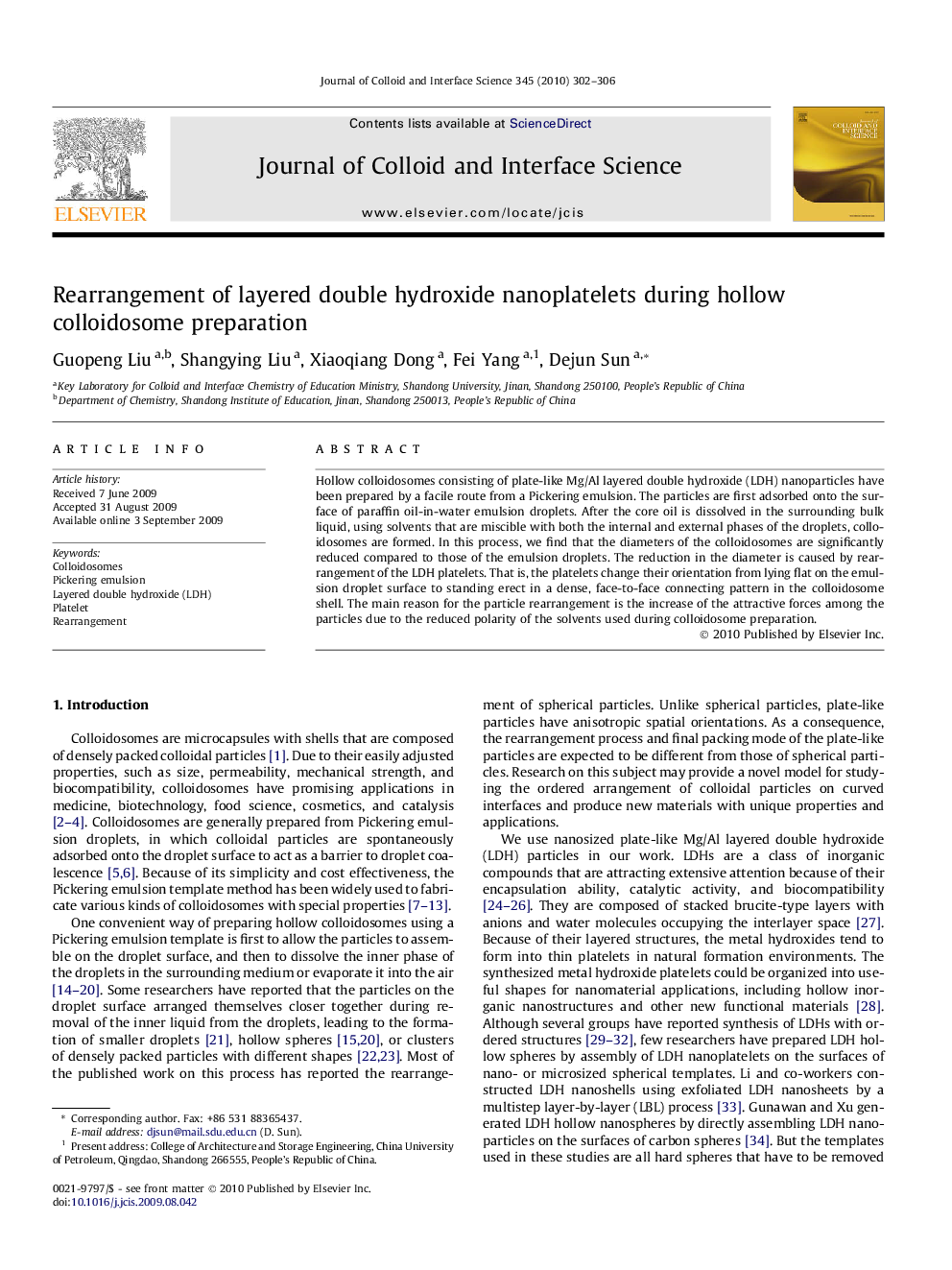| Article ID | Journal | Published Year | Pages | File Type |
|---|---|---|---|---|
| 609876 | Journal of Colloid and Interface Science | 2010 | 5 Pages |
Hollow colloidosomes consisting of plate-like Mg/Al layered double hydroxide (LDH) nanoparticles have been prepared by a facile route from a Pickering emulsion. The particles are first adsorbed onto the surface of paraffin oil-in-water emulsion droplets. After the core oil is dissolved in the surrounding bulk liquid, using solvents that are miscible with both the internal and external phases of the droplets, colloidosomes are formed. In this process, we find that the diameters of the colloidosomes are significantly reduced compared to those of the emulsion droplets. The reduction in the diameter is caused by rearrangement of the LDH platelets. That is, the platelets change their orientation from lying flat on the emulsion droplet surface to standing erect in a dense, face-to-face connecting pattern in the colloidosome shell. The main reason for the particle rearrangement is the increase of the attractive forces among the particles due to the reduced polarity of the solvents used during colloidosome preparation.
Graphical abstractHollow colloidosome fabricated from emulsion droplet stabilized by LDH platelets. During preparation, the platelets changed their orientation from lying flat on the droplet surface to standing erect in the colloidosome shell.Figure optionsDownload full-size imageDownload as PowerPoint slide
